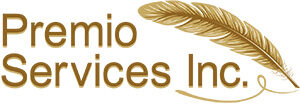What Nonprofits Need to Know
As the icy winter begins to thaw here in the rugged state of Idaho, the energy of spring reminds us that with the change of one season comes the newness of another.
Current changes to the federal grant landscape are requiring nonprofits to reassess funding and sustainability strategies. It is crucial to stay informed and adaptable as policy and budget changes unfold.
Premio Services is committed to supporting nonprofits through these uncertain times by providing insights into the current funding freeze and sharing strategies to navigate this rapidly shifting terrain.
Understanding the Federal Grant Freeze
On January 27, the Office of Management and Budget (OMB) issued a directive freezing all new federal spending. Since then, a series of legal challenges have temporarily blocked aspects of the freeze, but uncertainty remains. A federal budget maintaining federal funding at current levels was approved by the Senate on March 15, 2025, avoiding a government shutdown. Additional budget shifts are anticipated during the next appropriations cycle in October.
Federal funding disruptions don’t just impact organizations directly receiving federal grants. Those reliant on state and private funding are also adversely affected. Increased competition for foundation grants and trickle-down effects to states are creating additional challenges.
Key Budgetary Changes Affecting Nonprofits
- Non-Defense Discretionary Spending Cuts
- The current approved budget includes a $13 billion reduction in non-defense discretionary spending, significantly affecting support that nonprofits rely on to operate.
- Many previously funded initiatives have been scaled back or rescinded but not necessarily eliminated.
- We encourage nonprofits to monitor funder websites for strategic plan updates and revised opportunities.
- Earmarks and Community Project Funding
- Earmarks, also known as “Congressionally Directed Spending” in the Senate and “Community Project Funding” in the House, offer nonprofits an alternative pathway to federal funding.
- The earmark process can take 12-18 months, making long-term strategic planning essential for organizations seeking this funding.
- Nonprofits are encouraged to engage with congressional representatives early in the process to advocate for direct project funding.
- State Block Grants and Shifting Distribution Channels
- More discretionary funding will now be distributed through state block grants rather than direct federal agency allocations.
- Nonprofits need strong relationships with state officials and agencies to remain competitive for these funds.
- Federal Program Adjustments
- While some programs face budget reductions, others – such as FEMA (disaster relief) and the Department of Defense (public safety and enforcement) – have received funding increases.
- Primary agencies that have received or anticipate receiving cutbacks (including mass reductions in staff) include:
- US Agency for International Development (USAID)
- Department of Veterans Affairs (VA)
- Department of Education
- Consumer Financial Protection Bureau
- Federal Bureau of Investigation (FBI)
- Department of Justice (DOJ)
- Internal Revenue Service (IRS)
- Social Security Administration
- Additional entities that will be affected:
- Federal Mediation and Conciliation Service
- United States Agency for Global Media
- Woodrow Wilson International Center for Scholars in the Smithsonian Institution
- Institute of Museum and Library Services
- United States Interagency Council on Homelessness
- Community Development Financial Institutions Fund
- The Minority Business Development Agency.
- The Council of State Governments has published information on the impact of these changes at the state level. This is a key resource for organizations relying on trickle-down or pass-through funding.
Strategies for Nonprofits Moving Forward
1. Strengthen Relationships with Existing Funders
Many funders are prioritizing established relationships over new requests due to heightened demand. To maintain funding:
- Proactively engage with current funders and provide updates on program impact and outcomes;
- Position your organization as a stable and reliable partner;
- Where possible, consider securing multi-year commitments to reduce short-term funding uncertainty.
2. Explore Partnerships and Fiscal Sponsorships
Funders commonly favor collaborative efforts over duplicated services. To improve funding opportunities:
- Form strong partnerships with organizations that align with your mission;
- Small nonprofits can explore fiscal sponsorship arrangements with larger nonprofits;
- Engage in collective impact initiatives (e.g. partner as a co-applicant on grant applications to optimize resources and amplify impact).
3. Monitor Policy Changes and Agency Guidance
Each federal agency is implementing funding restrictions differently, creating widespread uncertainty. To stay informed:
- Regularly check agency websites for strategic plan updates and funding opportunities;
- Follow nonprofit advocacy organizations such as the National Council of Nonprofits and the Idaho Nonprofit Center;
- Subscribe to federal grant management newsletters for real-time updates.
- Connect with grants consultants that specialize in federal funding. Sample directories:
4. Prepare for Increased State-Level Funding Distributions
With discretionary funding shifting to state block grants, nonprofits can:
- Engage with state agencies to better understand grant processes and eligibility requirements;
- Participate in state-level policy discussions that impact nonprofit funding;
- Develop localized strategies for accessing state-allocated federal dollars.
5. Engage in Advocacy and Congressional Outreach
Nonprofits can influence funding decisions through advocacy efforts! To make an impact:
- Meet with congressional representatives to discuss program funding needs;
- Submit testimony or case studies demonstrating the importance of nonprofit programs;
- Participate in coalitions advocating for nonprofit funding priorities (we recommend the National Council for Nonprofits and Idaho Nonprofit Center).
6. Diversify Funding Streams
Given the reduction in certain federal funding areas, nonprofits can:
- Seek private foundation and corporate grants to supplement federal support;
- Explore revenue-generating opportunities (e.g. fee-for-service models);
- Develop a strong individual donor strategy to reduce reliance on institutional funding (e.g. matching gift campaigns).
Looking Ahead

At Premio Services, we understand the complexities and challenges nonprofits face in the best of times. As federal spending priorities rapidly change, nonprofits must remain agile. The next appropriations cycle in October is expected to bring further changes. Proactively assessing financial health, diversifying funding streams, and adjusting grant-seeking efforts as federal and state priorities emerge are more important than ever.
In the spirit of our unwavering mission to provide transformational grants services to organizations committed to improving communities, Premio Services is dedicated to helping nonprofits navigate current funding challenges. To talk through the specific obstacles your organization is facing and explore the tailored funding strategies and insights we offer (including individual coaching and community workshops), book a call.
As declared by the Idaho Nonprofit Center: Idaho runs on nonprofits. There is much comprehensive data to support this. Executive Director Kevin Bailey illustrates it vividly through the metaphorical life span of “Joe Idaho.”
- Joe is born in an Idaho nonprofit hospital.
- He spent his crucial early years of development in a nonprofit childcare center so both his parents could work to make ends meet.
- In childhood, Joe developed key life skills by participating in Boy Scouts and 4-H, both nonprofit services that were affordable for his family.
- He was steered away from adverse behaviors at a young age and was instead inspired to serve his country by his “brother,” a mentor in the nonprofit Big Brothers Big Sisters.
- His family further enriched his life by visiting nonprofit zoos, museums, and libraries, where they had free access to the internet, community activities, and a plethora of educational resources.
- After graduating from high school, Joe served in the military and received help from nonprofits to enter college and earn his degree, which helped him continue building his career.
- Married not long after with a young family to support, Joe obtained nonprofit services for access to affordable housing.
- He and his growing family enjoyed safe recreation in Idaho’s spectacular outdoors, thanks to nonprofits dedicated to environmental stewardship.
- With work and home life stability, Joe was able to volunteer his free time to nonprofits in his community with missions aligned with his values.
- Through his example of civic engagement, Joe’s children developed a sense of belonging and grew up empowered to advocate for themselves and others.
- Having experienced significant upward economic mobility through the support of nonprofits over his lifetime, Joe built a future for his family and became a philanthropist himself. He left a legacy of giving back, community-building, and helping underserved people of all cultural backgrounds and economic circumstances.
Nonprofits fill significant gaps in critical cause areas and improve the lives of countless people.
We believe nonprofits have the grit, tenacity, and fortitude to remain rooted in their communities despite the shifting funding climate.
By staying informed, adaptable, and connected, we know nonprofits can thrive in symbiosis with their communities and will continue to lead in making the world a better place for everyone.

